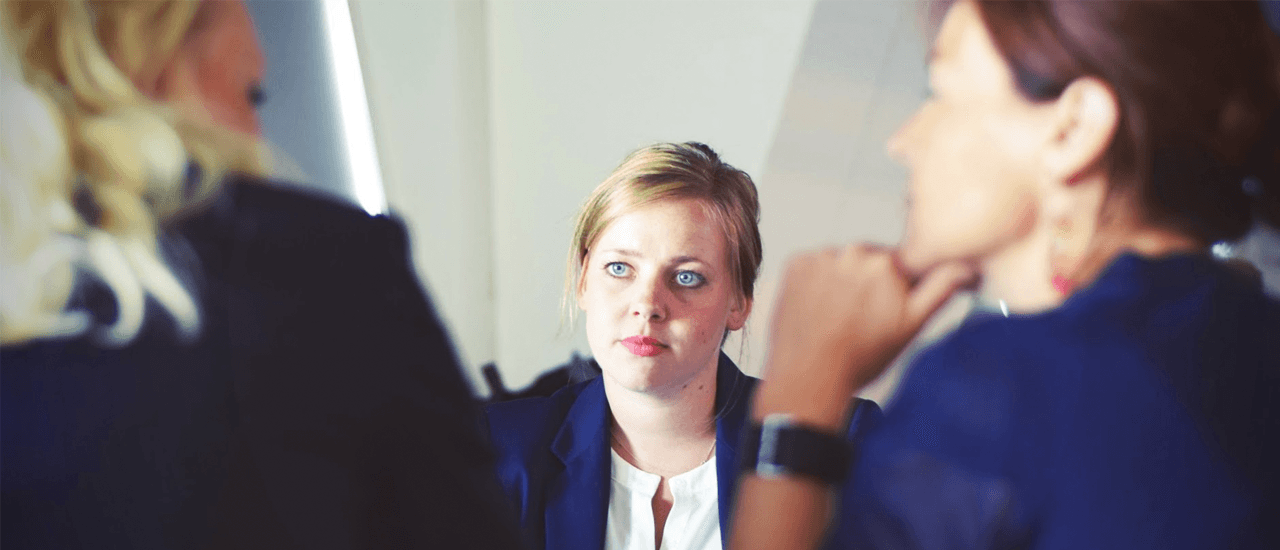Women with my body type are not models. In fact, there are not very many options for flattering clothing for women with my body type. I am not a size two. I am not a size 16. I'm in the middle.
Racked calls this the "delightful valley between typical straight sizes and typical plus sizes, otherwise known as the in-between sizes," and I live there. Most women live there. But in the fashion industry, no one lives there. Models and bloggers who are neither sample size nor plus size are often told they have to either lose weight or gain weight in order to have a career.
"For people who were like me who are kind of in between plus sizes and standard sizes, it’s hard to navigate the fashion industry because people want to categorize you as plus-size," says size 14 style blogger Bianca Vaccarini. Though most plus-size only clothing companies start at size 16, Vaccarini says she is more often than not approached by them for collaborations.
"I do label myself as plus size even though I am more in between because I guess the straight-size blogging industry has a certain image," she tells Racked. "When people see me on the street, it’s like ‘Oh, that’s a curvy fat girl, she’s obviously not someone who would be a standard-size blogger.’ They would put me more in the category of being plus size, so I get a lot more plus-size pitches from companies."
The reality is, there's an amazing array of female body sizes in the world, but for some reason the media doesn't want to show that reality. Popular culture would have us believe there are only two types. Sample size and plus. Everyone else doesn't seem to exist.
Racked uses a section from Mindy Kaling’s book, Is Everyone Hanging Out Without Me? to perfectly illustrate how frustrating this is.
“Since I am not model-skinny, but also not super-fat and fabulously owning my hugeness, I fall into that nebulous, ‘Normal American Woman Size’ that legions of fashion stylists detest. For the record, I’m a size 8 (this week, anyway). Many stylists hate that size because, I think, to them, I lack the self-discipline to be an aesthetic, or the sassy confidence to be a total fatty hedonist. They’re like, ‘Pick a lane.’”
So why does this happen? Why are the majority of women being ignored? Well, it's a vicious circle.
Because the industry only knows two types of women, every woman who is not a sample size is considered "plus". Racked points out that in 2015 model Robyn Lawley was touted as the first plus-size model to appear in Sports Illustrated. Lawley is a size 12. The average American woman is a size 14. Lawley is below the average. The fashion industry doesn't know what to do with her, so, to them she is plus-size.
Even Ashley Graham, who’s one of the most recognizable plus-size models in the world and who was featured on the cover of the Sports Illustrated’s swimsuit edition in 2016, is on the small end of the plus-size range as we know it.

On the clothing side there are a few retailers that are trying to create fluidity between straight sizes and plus sizes by simply carrying all sizes. It's not only the right thing to do, it's also good business. ModCloth doesn't separate between the two, and JCPenny's latest line purposefully caters to women who fall in that in-between size range. Racked also points to minimalist online shop Universal Standard as an example of brands making strides to speak to the in-between woman.
Universal Standard co-founder Alexandra Waldman sums it up perfectly. "I’ve never understood the segregation," she told Racked. "There’s clothing for big people and clothing for small people. Why can’t there just be clothing?"
instant happy in your
mailbox every day.






